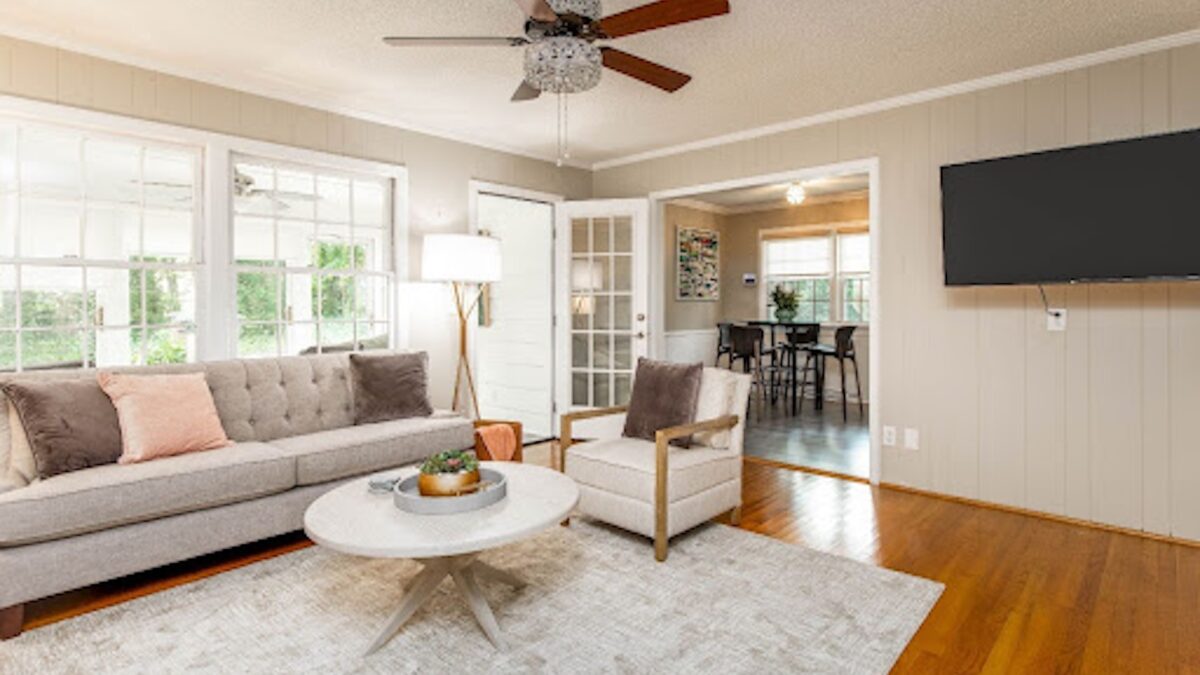When it comes to design, the beauty of a home or apartment is in the details. Accent pieces add warmth and character to your décor and reflect your own personal style. Choosing the right accents can be a challenge, but a few tips and tricks can help. Use this handy guide to decorate any interior space like a pro.
Define Your Style
Before you choose accent pieces for your home, it’s important to identify your design aesthetic. Modern, traditional, contemporary, French country, coastal, or rustic — do some research and decide what type of decor you prefer. Consider the color palette you would like to use and the types of texture you want to display, from wooden picture frames and wicker chairs to wool pillows.
Start with Area Rugs
The moment you lay it down, an area rug can define the look of a room, so it makes a great place to start building decor. If you want to create a living room with a more traditional style, create an arrangement with all furniture legs resting on a centralized area rug. For a more contemporary look, the rug should be free of any furniture.
Include Accent Furniture
Bedroom, home office, den, or living room — all interior spaces need basic furniture items, but accent pieces tie a room together. Look for accent furniture that complements your decor but also adds interest, like a vintage trunk or a zebra-print stool. When choosing accent furniture for small spaces, consider items like a stylish corner chair or a patterned fabric storage bench.
Warm Up Your Walls
Blank walls can make a room feel cold, so use wall accent pieces for a warm and welcoming look. In a small room, hang a mirror opposite a window to reflect sunlight and create the illusion of more space. Add a wall planter to bring in a touch of nature or consider other wall decorations:
- Add shelving to display books or mementos
- Hang wall art like paintings, drawings, and photos
- Cover a wall with a colorful tapestry
- Add a wall fountain to instill a sense of serenity
- Adorn a wall with an interesting clock
Add Pops of Color with Pillows
Pillows offer an inexpensive way to experiment with patterns and color. Try bold geometric prints for a modern aesthetic and florals and paisleys for more traditional decor. According to Real Simple Magazine, an odd number of pillows delivers a more artistic and random display, and no matter the pattern, all pillows should have at least one color in common for a sense of harmony.
Create Charm and Character with More Accessories
Don’t underestimate the importance of accessories in interior design. These decorative items bring charm, character, and a touch of “you” to your living space. When choosing accessories, make sure they have meaning to you and don’t forget to mix color, texture, and size for an eye-catching display. In addition to rugs, accent furniture, wall art, and pillows, the following items make good options for enhancing interior spaces:
- Baskets, boxes, and bins
- Candles
- Blankets and throws
- Figurines and sculptures
- Bowls, vases, and urns
- Natural elements like flowers, pine cones, seashells, and fresh fruit
- Birdcages
- Bar carts and trays
- Mobiles and other hanging decor
Focus on Collections
Some design experts recommend displaying accessories in groups. The key is to group similar types of objects together or arrange accessories according to color. Daniel Barsanti, founder of the design firm Healing Barsanti Home, suggests using multiples of an accessory for decorating. For example, he contrasts deep red wall paint with matching white mirrors in the entryway of his own Connecticut home.
Lighten the Mood
Turn rooms from gloomy to welcoming with interior lighting. Transform a kitchen with pretty pendant lights, or brighten a living room with carefully placed floor lamps. Use small table lamps to illuminate dark corners, and show off a favorite work of art with track lighting. Spruce up a fireplace mantel with seasonal greenery and imitation candles, and string lights along a door frame or a bedroom canopy. Lighting changes the mood in an interior space with the flip of a switch.
Think About Scale and Proportion
Before choosing and displaying furniture and accent pieces, take time to analyze scale and proportion. This ensures that your decor looks balanced and harmonious. For instance, general design rules say that a coffee table should be 2/3 as long as the sofa it pairs with, and wall art should be 4/7 the size of the wall where it hangs.
Layer Furniture and Accessories
Interior designers use layering in a room to create interest and depth. To understand the concept of layering, it helps to think of decorating a cake. Start by placing the main statement piece or pieces first, and then build from there with color and texture in mind to complete the look.
Accent pieces add depth and dimension to interior design. Before purchasing accent furniture and accessories for your home or apartment, try out a temporary new look with stylish products from CORT Furniture Rental.





